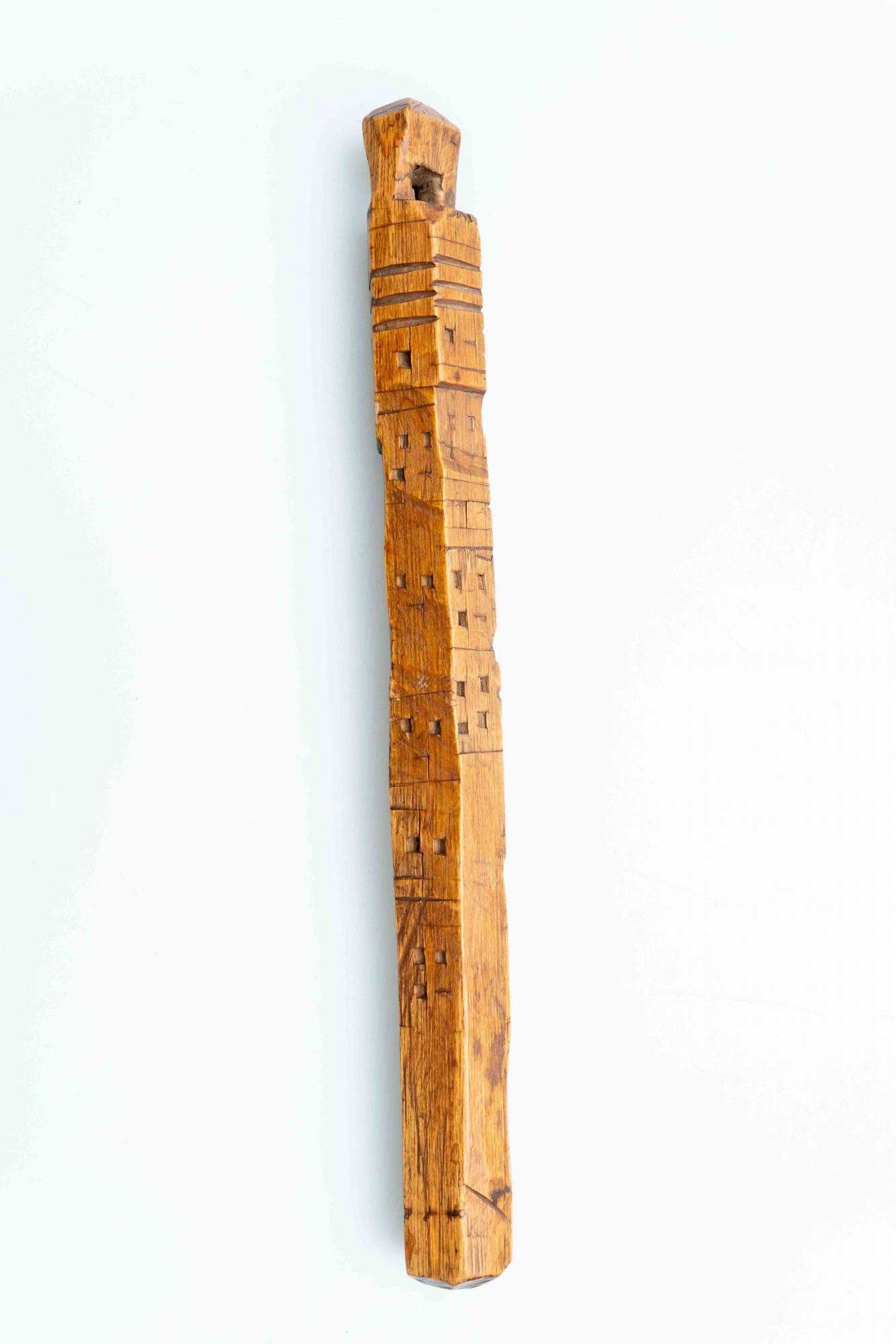
100 years – 100 artefacts
The shepherd’s wooden notch
As an artifact of the week, we propose a piece from the sheepfold’s inventory, namely the notch (“răbuș”, “răvaș”) – a stick carved on several sides on which were notched the quantities of milk obtained by each owner to “measure up” the milk, in order to know the due milk when it’s time for cheese. Milk was measured up by units of measurement that had different names depending on the area – “lingură”, “pliu”, “sfârtac”, etc., the spoon having a capacity of about 0.5 l. The notch was hung by the shepherd’s shelter, so that any shepherd or shepherd master could examine it. The notch in the picture, with inventory no. 199, comes from Bunila, Hunedoara county and it entered the museum’s patrimony in 1923. With a total length of 23 cm, it’s made of a single piece of hazelnut wood, with five facets, about 1.5 cm wide each. The upper part has a 2-cm narrow element, with a hole for a drawstring or hanging on a nail. The wide and thin notches are cut with the knife edge, and the auxiliary marks (knife stitches and square holes) are made with the tip of the knife.
The notch was not just a means of evidence used in the sheepfold. Yearly taxes and taxable fortunes concerning all family heads of a village were notched (the village notch was left at the mayor’s office, at the expense of the mayor so that he could be consulted by all community members).
In order to take into account the agreements between two persons with opposing interests, the two-piece notch was used: notch for agricultural works, notch for tradesmen-dyers, for aba-makers, for taxes, goods, transports, rent, teacher, cowboy, will, etc.
The piece in the image can be seen within the main exhibition from the Reduta Palace.
Text: Anca Mocan – MET museographer
Photo: George Ciupag – photo-video museographer, MET digital image processing



